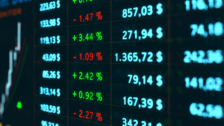The end is nigh as inflation rises to 3.8%
Australia’s inflation rate was released yesterday, hitting 3.8% over the year to June, from 1.1% for the twelve months to March. Looking at media headlines this morning, some suggest the June quarter rise in inflation is following the 5.4% rise in the US and looks concerning. Here were the ABS figures:
- CPI +0.8% in Q2, y/y jumps to 3.8% on base effects
- Core inflation benign +1.6% y/y, under RBA target band
- Extended lockdown in Sydney blows hole in Q3 GDP
Consumer prices rose by 3.8% with fuel, fresh fruit and vegetables, beef, medical costs and power costs on the rise, driving inflation higher. The most significant price rises came from fresh food, such as vegetables (+5.5pc), fruit (+4.7pc) and beef (+3.6pc). The biggest rise, was fuel, rising 6.5 per cent over the three months to June 30 and is now back at pre-pandemic prices.
According to an article written by David Bassanese, chief economist at Betashares, “the fact remains that underlying inflation – as measured by the trimmed mean – remains well below the Reserve Bank’s target. Along with the extension of Sydney’s lockdown to end-August, this virtually eliminates any chance the RBA will reduce its bond-buying program in September.”
Economists are saying that the rise in inflation is merely a short-term spike to reflect a few one-offs. These include: the end of Government subsidies for child care, petrol prices returning to pre-COVID levels and fruit and vegetables supply due to a shortage of pickers These are all one-offs and will not be repeated. Hence the word “transitory.” It’s a word central bankers love using, because it means something that is short-term only, and will pass.
Investors need to look at the trimmed mean inflation. According to Betashares it “strips out items with the most volatile price changes either to the upside or downside – this rate lifted to only 1.6% in the June quarter. By contrast, trimmed mean inflation in the United States is notably higher, having surged in recent months to 2.9%. So even the post-COVID economic reopening to date has not managed to lift Australia’s rate of underlying inflation to the same extent as that evident in the United States.”
It should be noted that a rise in inflation to RBA’s 2%-3% target will require a sustained increase in wage inflation or major supply disruptions. “Given technology disruption, the eventual return of foreign workers and global competitive pressures, a decent lift in wage inflation remains sometime away.”
The good news, is not to worry. Most of the rise is temporary and the result of one-off events. The Reserve Bank expects inflation to fall back below 2% by the end of the year. The bank forecasts consumer prices to rise by 1.5% through 2022.











